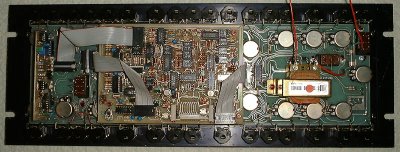
No title link. Just this shot and details pulled via
this auction.
"This is one of the cutest little synthesizers Casio ever made. It dates from 1981, and is the big brother of the Famous VL-1. You will know the sound of the PT-1 and VL-1 from famous songs like "Da Da Da" by the German group "Trio" (recycled into many different advertizing jingles over the last 26 years - most recently in Australia as "Sa-Ka-Ta"). It was also used in countless songs as a novelty fill in sound (The Bloodhound Gang have used their PT-1 on most of their albums).
This casio has been lovingly looked after, and is in a lot better condition than when I got her, she's been cleaned inside and out, and the key and button contacts were cleaned about 6 months ago, so, it works reliably. The batteries have never leaked, although, sadly, I received it with no battery cover, so, it has never had one to hold in it's 4 x AA power source - but this is not a problem as the batteries stay in. There is also a slider cap missing from one of the controls on the front. You can move this around to be which ever control you need it to be.
The PT-1 has all the famous beats of the VL-1, and most of the same sounds. It also has little letters in the plastic under the keys to let you know which notes you are playing (C D E F G). I don't know of any other small casios that have this feature. It's not very useful if you are an experienced player, but, again, cuteness. The PT-1 has an interesting set of capacitor filters and single transistor gates which drive the percussion section and melody tone generator, and, although the heart of the synthisizer is Digital (using Walsh Tones), there are a great many things which can be modified and changed to alter the sound (to make it harsher or smoother, depending on your tastes). The "bends" which can be accomplished (routing the drum tones to the pitch of the main instrument to make arpeggios and such) are varied, and don't require too much experimentation to get good results."
via
Loscha
 Title link takes you to one more image sent my way via MM.
Title link takes you to one more image sent my way via MM.
 No title link, just this shot pulled via this auction.
No title link, just this shot pulled via this auction. Videos currently include:
Videos currently include:
 I love this image from the manual.
I love this image from the manual. No title link. Just this shot and details pulled via this auction.
No title link. Just this shot and details pulled via this auction.











